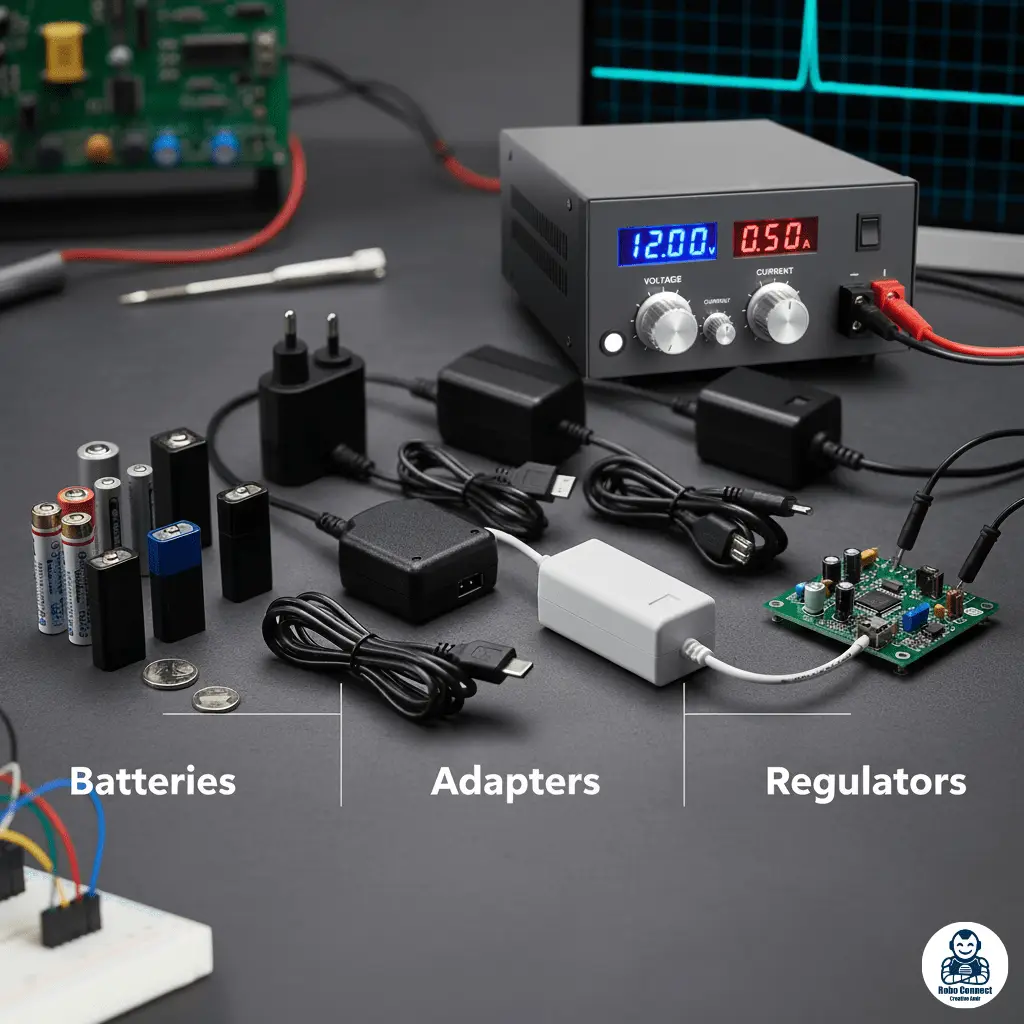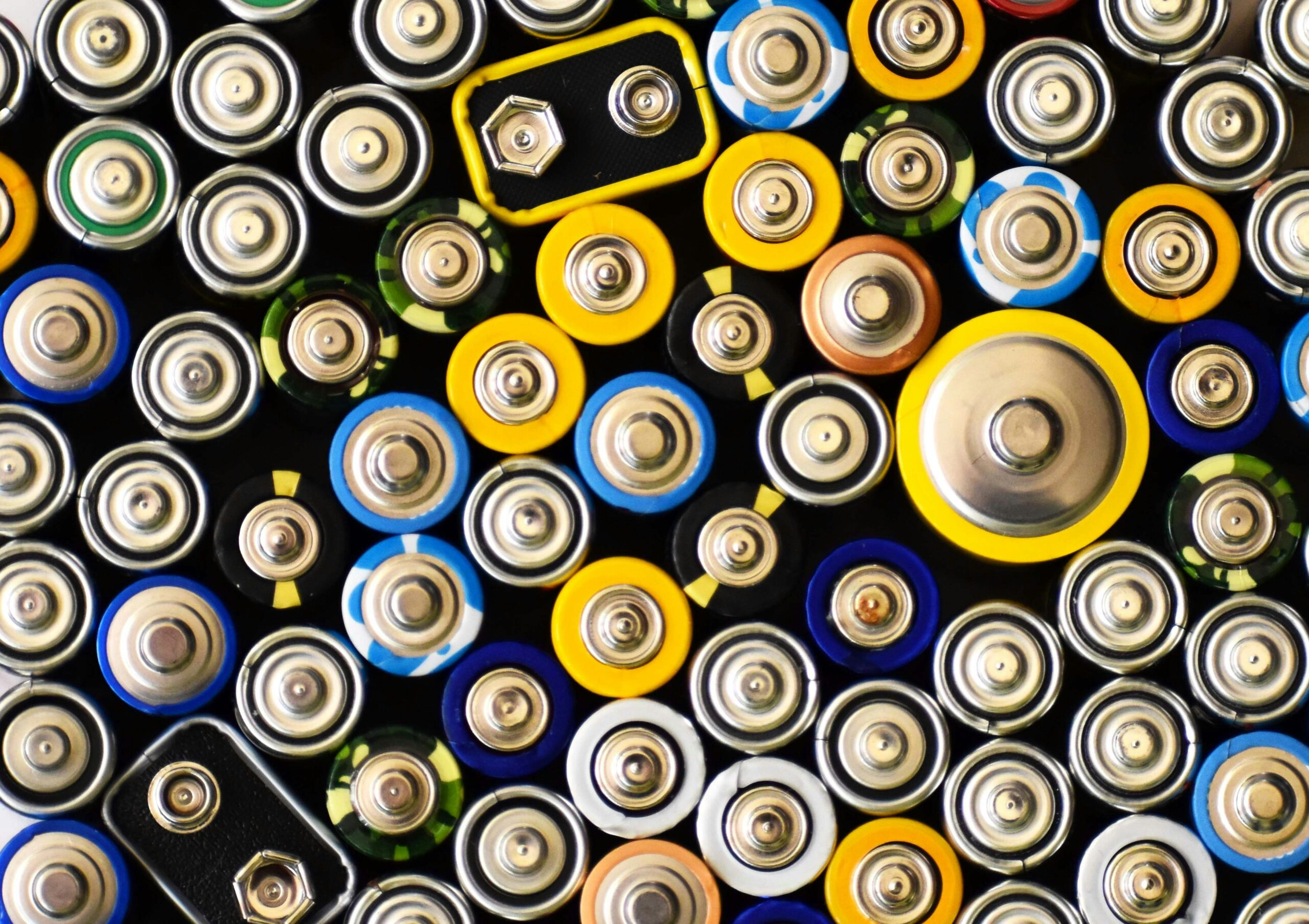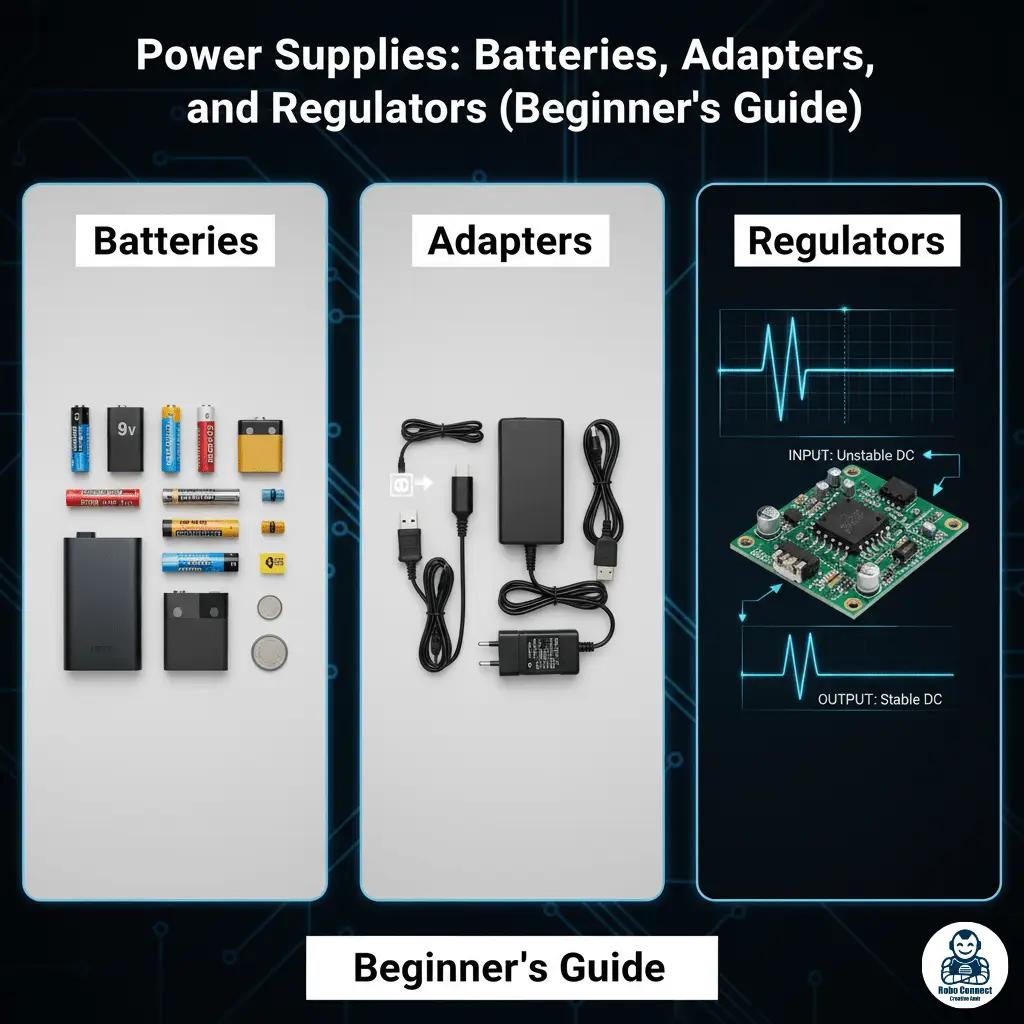Introduction
Every electronic device needs a power source. Without it, your clever circuits are just lifeless collections of components. But not all power is created equal—plugging the wrong voltage into a circuit can burn it out faster than you can say “magic smoke.”
In this guide, we’ll explore the most common power supplies for electronics:
- Batteries (portable)
- Adapters (plug‑in wall power)
- Regulators (to give stable, safe voltage like 5V or 3.3V)
We’ll also touch on famous regulators like the 7805, LM317, and the modern buck converter so you’ll know exactly how to feed your circuits reliably.
What is a Power Supply?
A power supply provides the electrical energy that runs a device. It converts raw input power (like AC from a wall socket or charge from a battery) into a safe, usable voltage and current.
👉 Think of it as the “diet plan” for your circuit—feeding it exactly the right amount of energy, not too much (burnout) or too little (doesn’t run).
Applications of Power Supplies
- Arduino Projects: 9V battery (with 7805 regulator) gives safe 5V.
- Robotics: Batteries with buck converters power motors + logic.
- Laptops/Chargers: Adaptors with regulated outputs (like USB‑C 5V/9V/12V).
- DIY Electronics: LM317 used to create custom lab supplies.
- LED Strips: Buck converters regulate down from 12V supplies.
Popular Voltage Regulators
- 7805 Voltage Regulator
- Fixed 5V linear regulator from the 78xx family (where xx = output voltage).
- Very popular for powering Arduino, LEDs, and sensors.
- Works like: Input 7–12V → Output steady 5V.
- Simple and cheap, but wastes power as heat (not efficient for high currents).
- LM317 Adjustable Regulator
- Linear regulator with adjustable output (1.25V to ~37V).
- Needs two external resistors to “set” the output voltage.
- Used when you need a custom voltage supply for specific circuits.
- Again, less efficient than switching regulators, but precise and easy to use.
- Buck Converter (Switching Regulator)
- Modern, efficient regulators.
- Step‑down (buck) converters reduce higher DC to lower DC efficiently.
- Advantage: Very little energy wasted as heat.
- Example: 12V down to 5V with >90% efficiency (vs ~60% for linear regulators).
- Perfect for projects with batteries where you want longer runtime.
Quick Comparison: 7805, LM317, Buck Converter
| Feature | 7805 (Fixed) | LM317 (Adjustable) | Buck Converter (Switching) |
| Output Voltage | 5V fixed | 1.25–37V adjustable | Adjustable (step‑down) |
| Efficiency | Low (heat) | Low‑medium | High (>90%) |
| Complexity | Very simple | Simple (needs resistors) | Moderate (inductor + switch) |
| Use Case | Classic 5V circuits | Custom voltages | Battery saving / efficiency |


